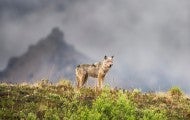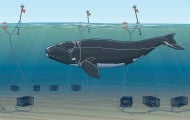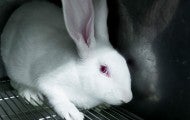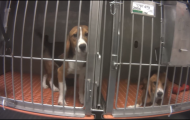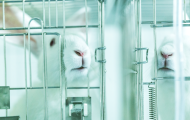Teddy was never meant to have a name. He was born a number, just one of tens of thousands of dogs—mostly beagles like him, chosen for their trusting, docile nature and compact size—bred in the United States for use in experiments each year. Teddy was meant to live and die in a laboratory, without...
They slip soundlessly through our landscapes, cloaked in a rainbow of colors and patterns that help them become one with bark, rocks, leaves and soil. Often the only sign of their existence is what they leave behind: ghostly shed skins imprinted with shapes of eyes and scales, traces of pigmentation...
Flying back and forth over Cape Cod Bay, a survey plane spotted a half dozen of the world’s rarest creatures: North Atlantic right whales. Such sightings are good news. The species hovers near extinction—by one estimate, fewer than 360 remain. Each time researchers locate a whale, they take pictures...
WASHINGTON—The National Academies of Science, Engineering and Medicine published a report yesterday analyzing the use of primates in experiments funded by the National Institutes of Health and examining “opportunities for new approach methodologies to complement or reduce reliance on NIH-supported...
Contents How many dogs are used in experiments every year? What kinds of experiments are dogs used in? What kinds of institutions use dogs in experiments? Which laboratories in the U.S. have the largest number of dogs in their possession? Where do laboratories get the dogs they use in experiments...
Contents How many animals are used in experiments each year? Which animals are used in experiments? What kinds of experiments are animals used in? What kinds of institutions use animals in experiments? Where do laboratories get the animals they use in experiments? What is life like for animals in...
Canada's annual commercial seal hunt is the largest slaughter of marine mammals on the planet. Facing harsh criticism the world over because of the hunt's cruelty and unsustainability, the Canadian government and fishing industry have spread much misinformation. Here are the basic facts about the...
When a young Jane Goodall entered the forests of Tanzania to study wild chimpanzees, neither she nor those supporting her work imagined the influence she would have. Today, Goodall—Ph.D., DBE, founder of the Jane Goodall Institute, and United Nations Messenger of Peace—is recognized not only as a...
Contents What products are considered cosmetics? Is animal testing legally required for cosmetics sold in the United States? Where is cosmetics testing on animals mandatory? Where is cosmetics testing on animals banned? Why do some cosmetics companies still use animal testing? How do I know if my...
Artificial intelligence, organ-on-chip technology and 3D bioprinting: These advancements promise to dramatically reshape our world, and they’ll play a part in making animal experiments obsolete. Sophisticated testing and research methods that use human cells or human biology-based technology will one day completely replace experiments on animals—a game-changer not just for animals, but for human health. The only question is how quickly it will happen.
As the world looks on in horror at images of Brazil’s Amazon rainforest engulfed in flames, many are asking why this important ecosystem is on fire, and what we can do to put out the flames once and for all. The situation is complex but there is one simple action we can take: we need to dramatically...
Brazil this week announced sweeping changes to its requirements for animal testing of agricultural pesticides, including eliminating the requirement for a controversial one-year toxicity test conducted on dogs. The move will potentially spare the lives of tens of thousands of animals used each year...
Today, the U.S. Fish and Wildlife Service announced it will be proposing a rule that would ban predator control on the National Wildlife Refuge System. When finalized, this rule will be a huge victory for countless wildlife living on refuges. The National Wildlife Refuge System is home to thousands...
Florida, in the midst of an explosion in the population of green iguanas, is actively encouraging residents to kill the animals “whenever possible” around their homes or on public lands. This irresponsible directive from the state’s Fish and Wildlife Conservation Commission is not accompanied by any...
In so many respects, scientific and technological innovation has defined this era—so it is nothing less than absurd that taxpayer dollars still fund animal experiments when non-animal approaches that could yield far better results for human health exist. That’s why we push to take the suffering out of science by, among other things, advocating for changes in how taxpayer funding is spent.
The world is moving toward a future dominated by sophisticated methods that use human cells, tissues and organs, 3D printing, robotics, computer models and other technologies to create approaches to testing and research that do not rely on animals. These methods are often faster, less expensive and...




